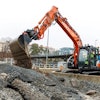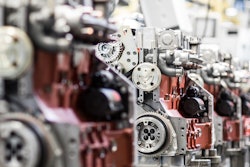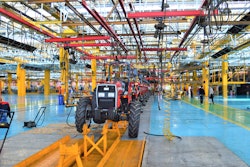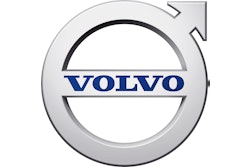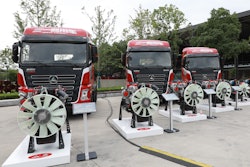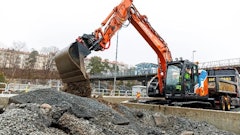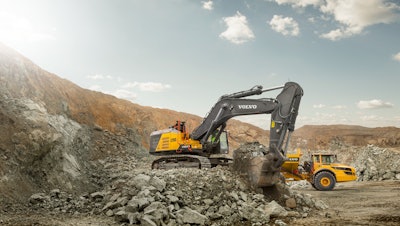
The Volvo Group has released its second quarter 2020 financial report and notes the COVID-19 pandemic had a severe impact on sales during the period.
"The second quarter of 2020 was characterized by the COVID-19 pandemic and its negative effects on society and economic development," says Martin Lundstedt, President and CEO of the Volvo Group. "Measures adopted by countries to control the spread had a significant impact on our production and supply chain as well as on demand for our products and services. Our net sales decreased by 39% to SEK 73.2 billion.
"After having been standing still in April, production was gradually restarted in May and is currently running well thanks to great efforts by our colleagues and suppliers. We also took forceful actions to reduce activities and costs, including salary reductions, temporary layoffs as part of governmental programs and a reduction of purchased services. All of these activities contributed to the Volvo Group achieving an adjusted operating income of SEK 3.3 billion (15.1) with a margin of 4.5% (12.5)."
Key notes from the company's financial report include:
- Severe impact from COVID-19-related effects on both sales and earnings.
- In Q2 2020, net sales amounted to SEK 73.2 billion (120.7). Adjusted for currency movements, net sales decreased by 38%.
- Adjusted operating income amounted to SEK 3,272 M (15,105), corresponding to an adjusted operating margin of 4.5% (12.5).
- Reported operating income amounted to SEK 388 M (15,105).
- Operating income in Q2 includes restructuring charges of SEK 3,200 M related to the previously announced cost-reduction measures, which are expected to generate annual savings in the same magnitude with the majority taking effect during the first half of 2021.
- Currency movements had a positive impact on operating income of SEK 341 M.
- Diluted earnings per share amounted to SEK -0.14 (+5.47).
- Operating cash flow in the Industrial Operations was negative in an amount of SEK 5,718 M (positive SEK 13,867 M).
Volvo CE sales decline, order intake increase
Volvo Construction Equipment’s (Volvo CE) second quarter results were also negatively impacted by the global pandemic. Weak demand in Europe and North America was partially offset by a strong rebound in the Chinese market, the world’s largest. Despite lower demand impacting sales, profitability held up well during the period.
Adjusted net sales in the second quarter decreased by 14%, amounting to SEK 22,876 M (SEK 26,814 M in Q2 2019). Higher sales in China did much to compensate for lower sales in all other markets. Operating income was also impacted, at 3,108 M was down from the 4,153 reported in the same period the year before, equating to an operating margin of 13.6% (15.5%).
Despite the impact of the pandemic on sales, the second quarter 2020 saw order intake increase by 11%, driven by a strong demand for the company’s SDLG branded machines, which were up by 31%. Notwithstanding that most factories in Europe and the Americas were shut down for a month during Q2, a result of countrywide lockdowns and supply issues, deliveries increased by 8% in Q2.
The year up to the end of May saw both the European and North American markets, measured in units, shrink by 22%, while the Asian market (excluding China) reduce by 21%. The Chinese market has recovered strongly, and was up 13% at the end of May. The South American market was also in positive territory, up by 8% at the same point in the year.
“While demand for construction equipment in both Europe and North America was weak during the second quarter we were able to leverage our strong position in China, which rebounded strongly in the period,” comments Melker Jernberg, Head of Volvo Construction Equipment. “This is allowing us to act from a position of relative strength and to drive transformational technologies that are moving our industry to more sustainable solutions. We are continuing to invest in electrification, automation and connectivity.”
